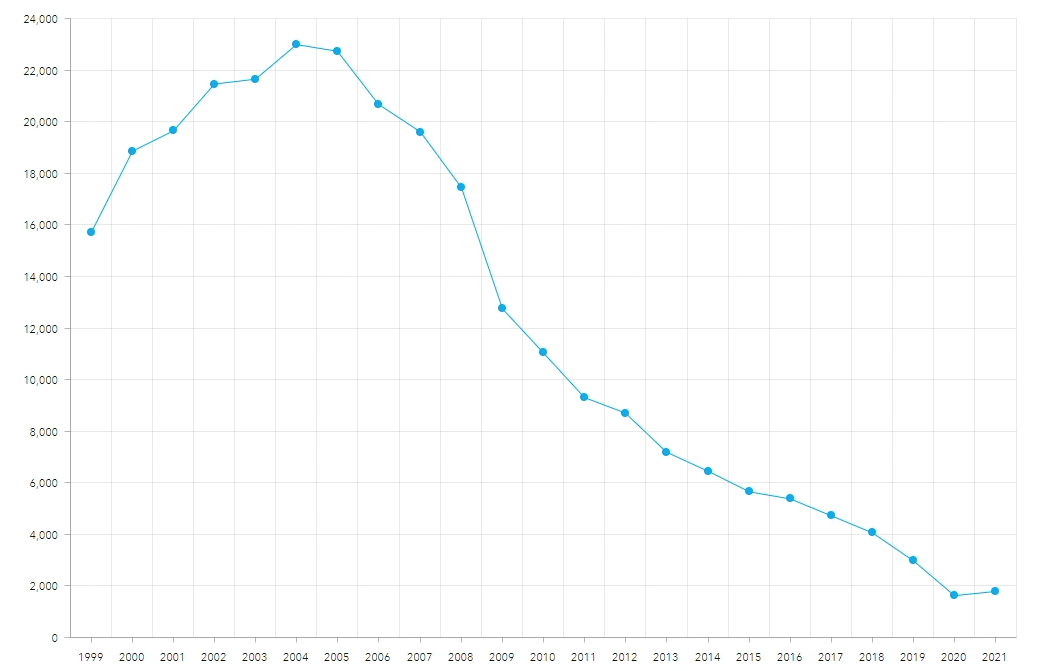Adoption Trends in 2023
When considering the right path for your family, many explore adoption in the U.S. and abroad. You can adopt from the foster care (public) system, caring for a child until they are approved for permanency in your home, or through private infant adoptions in the U.S. or internationally. Learn more about types of adoptions and how to start your journey here.
Over the last few years, we have seen varying trends in adoption, and options for families have shifted. There continues to be a need for foster care parents and adoption placements, with about 117,000 children waiting to be adopted in the U.S., including 2,500 children in Pennsylvania. In private placements, there is a trend of adoptive parents and expectant parents finding each other directly – through work, friends, their community, social media, or apps. This is known as independent adoption, where you match directly rather than using agencies or other third parties. Working with an agency can limit you to only certain matches that are in that program. Learn more about independent adoption here. The cost of adoption continues to be barrier for many families, and increases with more parties involved in your situation, such as facilitators or consultants for matching.
Decrease in domestic adoptions
We have seen a decrease in domestic adoptions in general, as reported by the National Council for Adoption. In 2019, there were 115, 353 domestic adoptions, made up of 57% public (foster) adoptions, and 43% private adoptions. In 2020, there was a 17% decrease to 95,306 adoptions, made up of 58% public adoptions and 42% private adoptions. These numbers include second and step-parent adoptions as well private infant placements.
Roe v. Wade
With the 2022 Supreme Court ruling in Dobbs v. Jackson Women’s Health Organization overturning Roe v. Wade, many anticipated an increase in adoptions for waiting families, as adoption was discussed as an alternative to abortion in the Court’s decision.
In looking at whether there is a correlation between adoption and abortion, it is found that over 90% of women who were denied abortion services choose to parent versus choosing adoption, based on The Turnaway Study, which tracked nearly 1,000 women for five (5) years. The study concluded, “[p]olitical promotion of adoption as an alternative to abortion is likely not grounded in the reality of women’s decision making.” Abortion is currently banned in at least thirteen (13) states, and the changing laws on abortion can be found here.
However, since the ruling in June 2022, we have not seen such an increase in adoption. It is estimated there continue to be 1 -2 million waiting prospective parents seeking an infant adoption placement in the U.S. There have been societal changes, like acceptance of single motherhood, that may lead to parenting. Adoption also carries a significant emotional and lifelong burden for the parties involved, and unfortunately has a history of secrecy and distrust. Many proceed with an adoption plan due to their economic or living situation and do so only after learning of the pregnancy at a later time. Lack of access to abortion services doesn’t lead to more adoptions, it leads to people parenting more children.
International adoption
International adoption, or foreign or intercounty adoption, used to be a common option for families and has rapidly declined in recent years. In 2021, there were 1,785 foreign adoptions, and 235 were from Ukraine. In the height of intercountry adoption in 2004, there were 22,987 foreign adoptions. The number of intercounty adoptions continues to decrease due to the political climate, corruption, human rights issues, accreditation requirements, and international laws. The below map shows the overall decline in intercounty adoption from 1999 – 2021.

The Department of State publishes annual reports outlining the breakdown of countries and states with intercountry adoptions, and the 2022 Report is available here. You can also search their interactive website by country, state, or year here.
As adoption law is state-specific, if you are interested in learning more about adoption options in your state, contact an attorney from the Academy of Adoption & Assisted Reproductive Attorneys here.
The information contained in this publication should not be construed as legal advice, is not a substitute for legal counsel, and should not be relied on as such. For legal advice or answers to specific questions, please contact one of our attorneys.



